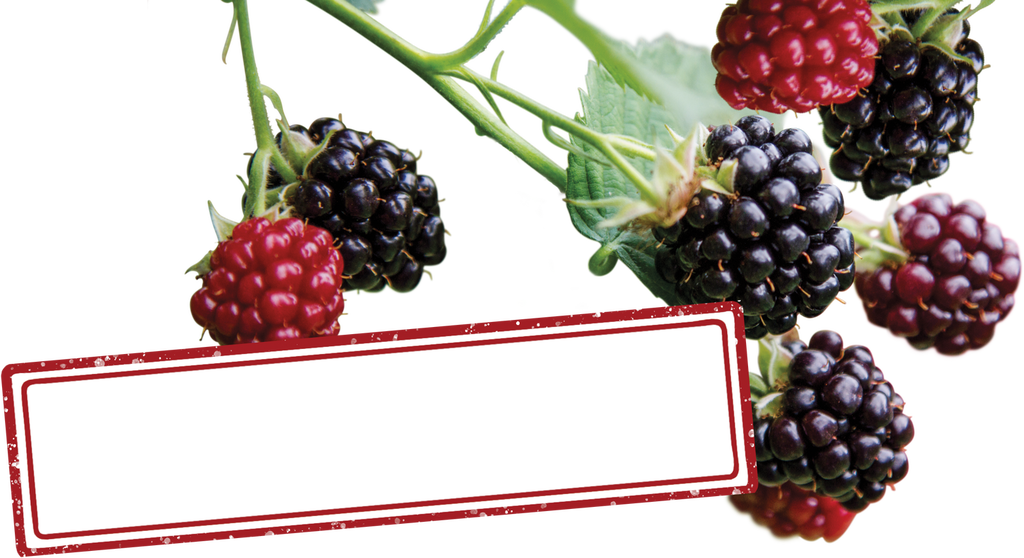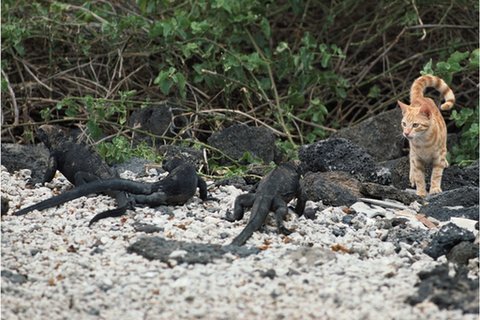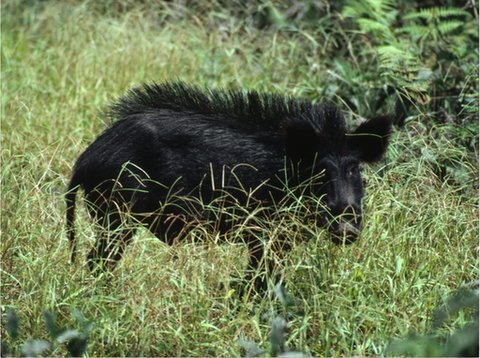
FromthemomentTomásdeBerlangaandhiscrewwereblownoffcourseandarrivedattheGalápagosin1535,peoplebegantointroducenewplantsandanimalstotheislands.Manywerebroughthereintentionally,longbeforepeoplethoughtabouttheeffectsthesenewlivingthingsmighthaveontheexisting ones.
Goats,pigs,dogs,andplantswerebroughttotheislandsonpurpose.Theyweretheretomakelifeeasierfortravelersandsettlers.Theyarewhatwecallintroducedspecies.Otherlivingthings—rodents,insects,andweeds—probablyarrivedasstowawayson ships.

CatsarenotfromtheGalápagos.Acatcanharmnativeandendemic wildlife.

Wildboars,orwildpigs,nowroamthe islands.
Isthisimportant?Yes.BecausemostGalápagosplantsandanimalsevolvedinisolation,whichmeanstheyarevulnerabletocompetition,predation,anddiseasesfromtheseinvaders.TheCharlesDarwinFoundationestimatesthattherearemorethan1,700introducedspeciesintheGalápagostoday.Manyareharmless,butothersposeathreattonativespecies.Wecalltheseinvasive species.

Blackberryplantsgrowandspreadquickly.Theytakeupspacenativeplantsneedto grow.
PlantInvaders
Oftheseinvasivespecies,probably700ofthemareplants.Oneplant,inparticular,hasbeenacauseforconcern:thewildblackberry.Itwasfirstintroducedtotheislandsinthe1970s.Oncehere,itquicklyspreadacrossthe islands.
SomeofthehardesthitplaceshavebeentheScalesiaforestsonthehighlandsofSantaCruz,Isabela,Floreana,andSanCristóbal.Scalesia plantsaregiantmembersofthedaisyfamily.Theycangrowupto15meters(49feet)tallandhaveatrunkthatmeasures60centimeters(2feet)around.Theseforestsarehomestoavarietyofbirdspecies,includingthewoodpeckerfinchandvermilion flycatcher.
WildblackberrieseasilycrowdoutScalesia.On SantaCruzalone,onlyonepercentoftheoriginalScalesiaforestsremainintact,accordingtotheGalápagosConservationTrust.Acrosstheislands,it’sestimatedthatblackberrieshavetakenovertheequivalentofmorethan21,000 soccerfields.BlackberriesareproblematictoGalápagosfarmers, too.
Farmersconsidertheblackberryaweed.Itgrowsindense,thornythicketsuptofourmeters(13feet)tall.Itturnsfarmsintowastelandsbychokingoutotherplants.Fightingtheblackberryisharderthanyoumightthink.Destroyingitbyhandisback‑breakingwork.Andkillingitwithherbicidesistoorisky—thosepoisonscouldharmotherplantsandwildlife, too.